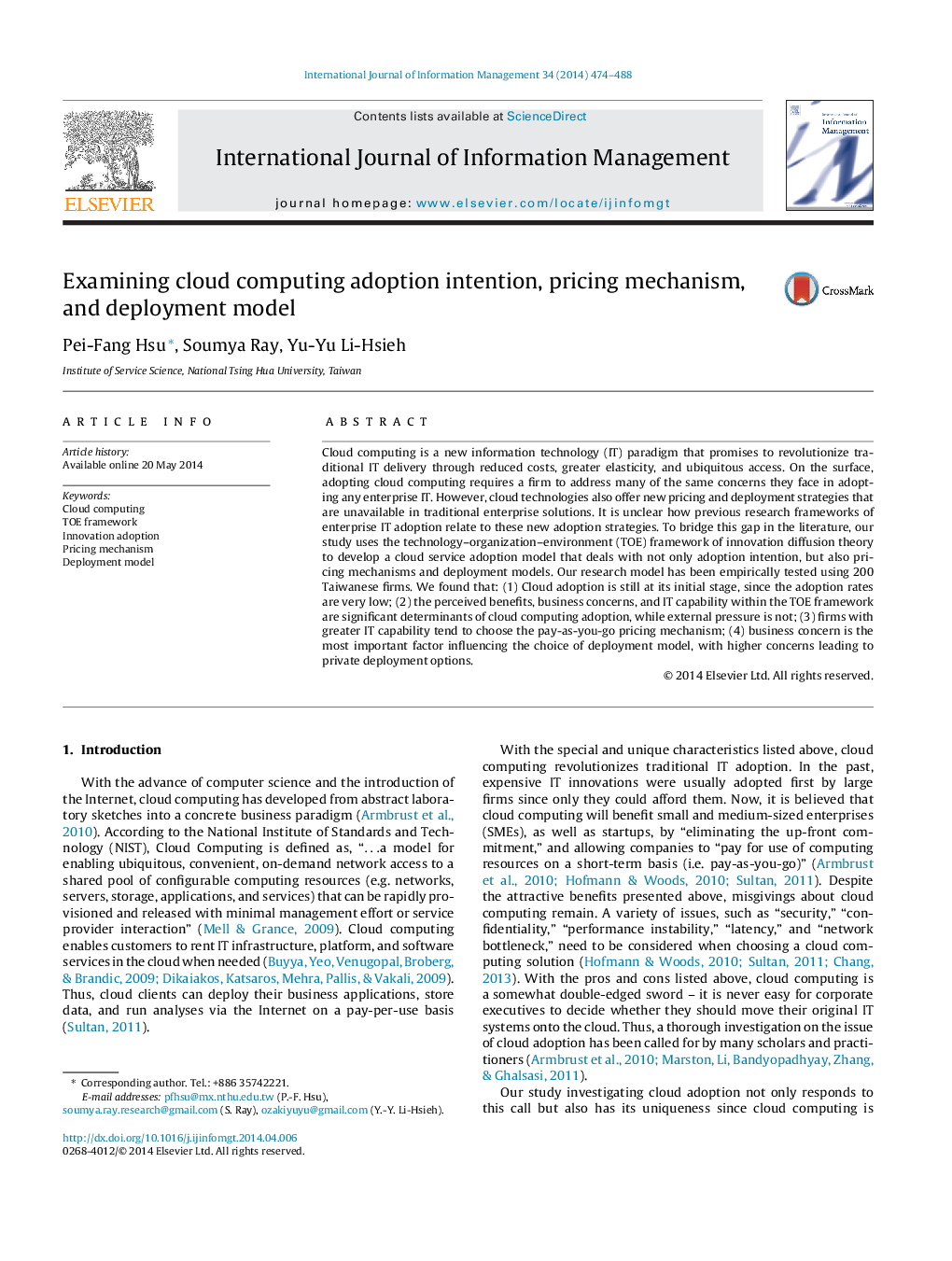| Article ID | Journal | Published Year | Pages | File Type |
|---|---|---|---|---|
| 1025652 | International Journal of Information Management | 2014 | 15 Pages |
•This study develops a cloud adoption model including adoption level, pricing mechanisms and deployment models.•The research model is examined with 200 Taiwanese firms.•Perceived benefits, business concerns, and IT capability are significant determinants, while external pressure is not.•Firms with greater IT capability tend to choose pay-as-you-go pricing mechanism.•The higher the level of business concerns, the more likely it is for the firm to choose the private cloud.
Cloud computing is a new information technology (IT) paradigm that promises to revolutionize traditional IT delivery through reduced costs, greater elasticity, and ubiquitous access. On the surface, adopting cloud computing requires a firm to address many of the same concerns they face in adopting any enterprise IT. However, cloud technologies also offer new pricing and deployment strategies that are unavailable in traditional enterprise solutions. It is unclear how previous research frameworks of enterprise IT adoption relate to these new adoption strategies. To bridge this gap in the literature, our study uses the technology–organization–environment (TOE) framework of innovation diffusion theory to develop a cloud service adoption model that deals with not only adoption intention, but also pricing mechanisms and deployment models. Our research model has been empirically tested using 200 Taiwanese firms. We found that: (1) Cloud adoption is still at its initial stage, since the adoption rates are very low; (2) the perceived benefits, business concerns, and IT capability within the TOE framework are significant determinants of cloud computing adoption, while external pressure is not; (3) firms with greater IT capability tend to choose the pay-as-you-go pricing mechanism; (4) business concern is the most important factor influencing the choice of deployment model, with higher concerns leading to private deployment options.
